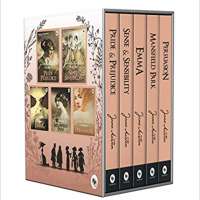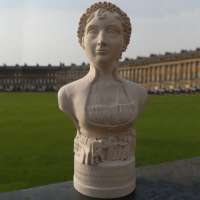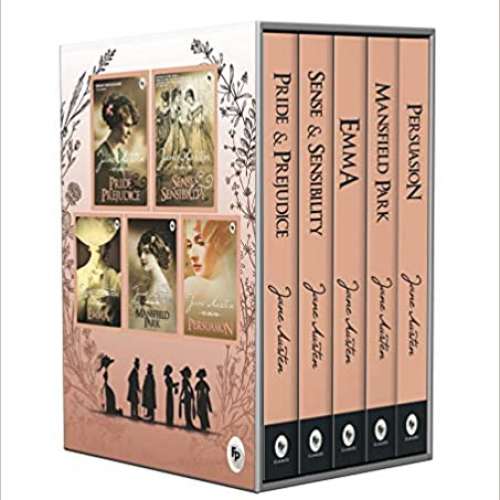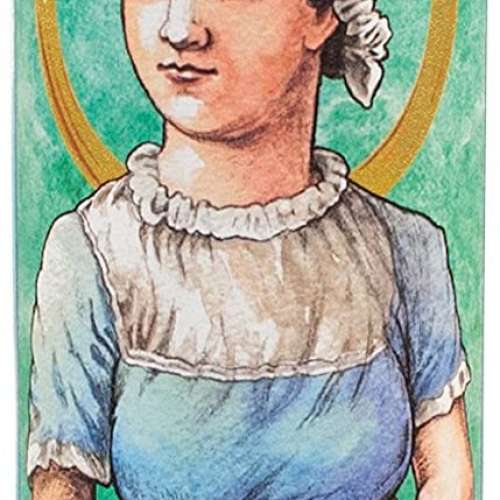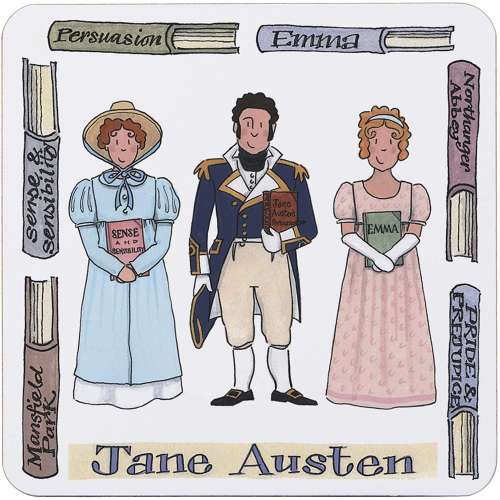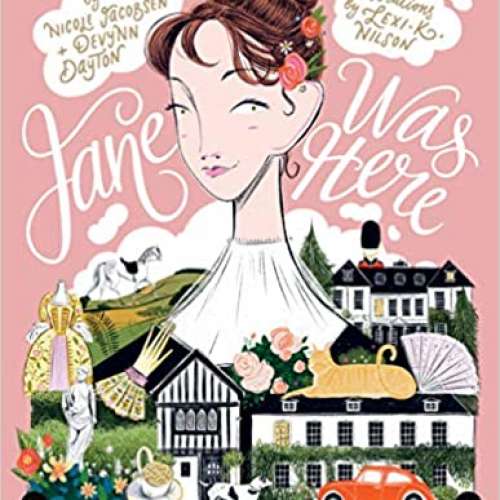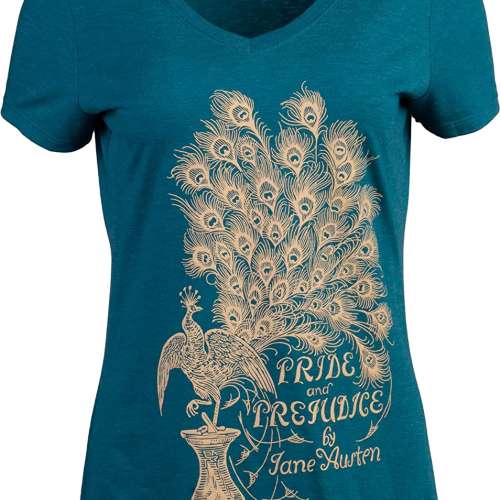

Jane Austen (1775-1817)
The person, be it gentleman or lady, who has not pleasure in a good novel, must be intolerably stupid.
Jane Austen was an English novelist known primarily for her six major novels, which interpret, critique and comment upon the British landed gentry at the end of the 18th century. Austen's plots often explore the dependence of women on marriage in the pursuit of favourable social standing and economic security. Her works critique the novels of sensibility of the second half of the 18th century and are part of the transition to 19th-century literary realism. Her use of biting irony, along with her realism, humour, and social commentary, have long earned her acclaim among critics, scholars, and popular audiences alike.
With the publication of Sense and Sensibility 1811, Pride and Prejudice 1813, Mansfield Park 1814 and Emma 1816, she achieved success as a published writer. She wrote two other novels, Northanger Abbey and Persuasion, both published posthumously in 1818, and began another, eventually titled Sanditon, but died before its completion. She also left behind three volumes of juvenile writings in manuscript, the short epistolary novel Lady Susan, and another unfinished novel, The Watsons. Her six full-length novels have rarely been out of print, although they were published anonymously and brought her moderate success and little fame during her lifetime.
A significant transition in her posthumous reputation occurred in 1833, when her novels were republished in Richard Bentley's Standard Novels series, illustrated by Ferdinand Pickering, and sold as a set. They gradually gained wider acclaim and popular readership. In 1869, fifty-two years after her death, her nephew's publication of A Memoir of Jane Austen introduced a compelling version of her writing career and supposedly uneventful life to an eager audience.
Austen has inspired many critical essays and literary anthologies. Her novels have inspired many films, from 1940's Pride and Prejudice to more recent productions like Sense and Sensibility 1995, Emma 1996, Mansfield Park 1999, Pride & Prejudice 2005, Love & Friendship 2016, and Emma. 2020.
Biographical sources
There is little biographical information about Jane Austen's life except the few letters that survived and the biographical notes her family members wrote. During her lifetime, Austen may have written as many as 3,000 letters, but only 161 survived. Many of the letters were written to Austen's older sister Cassandra, who in 1843 burned the greater part of them and cut pieces out of those she kept. Ostensibly, Cassandra destroyed or censored her sister's letters to prevent their falling into the hands of relatives and ensuring that "younger nieces did not read any of Jane Austen's sometimes acid or forthright comments on neighbours or family members". Cassandra believed that in the interest of tact and Jane's penchant for forthrightness, these details should be destroyed. The paucity of record of Austen's life leaves modern biographers little with which to work.

The situation was compounded as successive generations of the family expunged and sanitised the already opaque details of Austen's biography. The heirs of Jane's brother, Admiral Francis Austen, destroyed more letters; details were excised from the "Biographical Notice" her brother wrote in 1818; and family details continued to be omitted or embellished in her nephew's A Memoir of Jane Austen, published in 1869, and in William and Richard Arthur Austen-Leigh's biography Jane Austen: Her Life and Letters, published in 1913. The legend the family and relatives created reflects their biases in favour of "good quiet Aunt Jane", portraying a woman whose domestic situation was happy and whose family was the mainstay of her life. Austen scholar Jan Fergus explains that modern biographies tend to include details excised from the letters and family biographical materials, but that the challenge is to avoid the polarising view that Austen experienced periods of deep unhappiness and was "an embittered, disappointed woman trapped in a thoroughly unpleasant family".
Life
Family
Jane Austen was born in Steventon, Hampshire, on 16 December 1775. She was born a month later than her parents expected; her father wrote of her arrival in a letter that her mother "certainly expected to have been brought to bed a month ago". He added that her arrival was particularly welcome as "a future companion to her sister". The winter of 1776 was particularly harsh and it was not until 5 April that she was baptised at the local church with the single name Jane.
For much of Jane's life, her father, George Austen 1731–1805, served as the rector of the Anglican parishes at Steventon and at nearby Deane. He came from an old, respected, and wealthy family of wool merchants. Over the centuries as each generation of eldest sons received inheritances, their wealth was divided, and George's branch of the family fell into poverty. He and his two sisters were orphaned as children and had to be taken in by relatives. His sister Philadelphia went to India to find a husband and George entered St John's College, Oxford on a fellowship, where he most likely met Cassandra Leigh 1739–1827. She came from the prominent Leigh family; her father was rector at All Souls College, Oxford, where she grew up among the gentry. Her eldest brother James inherited a fortune and large estate from his great-aunt Perrot, with the only condition that he change his name to Leigh-Perrot.

George and Cassandra exchanged miniatures in 1763 and probably were engaged around that time. George received the living for the Steventon parish from the wealthy husband of his second cousin, Thomas Knight, who owned Steventon and its associated farms, one of which the Austen family rented to live in. Two months after Cassandra's father died, they married on 26 April 1764 at St Swithin's Church in Bath, by licence, in a simple ceremony. They left for Hampshire the same day.
Their income was modest, with George's small per annum living; Cassandra brought to the marriage the expectation of a small inheritance at the time of her mother's death. The Austens took up temporary residence at the nearby Deane rectory until Steventon, a 16th-century house in disrepair, underwent necessary renovations. Cassandra gave birth to three children while living at Deane: James in 1765, George in 1766, and Edward in 1767. Her custom was to keep an infant at home for several months and then place it with Elizabeth Littlewood, a woman living nearby to nurse and raise for twelve to eighteen months.
Steventon
In 1768, the family finally took up residence in Steventon. Henry was the first child to be born there, in 1771. At about this time, Cassandra could no longer ignore the signs that little George was developmentally disabled. He was subject to seizures, may have been deaf and mute, and she chose to send him out to be fostered. In 1773, Cassandra was born, followed by Francis in 1774, and Jane in 1775.
According to Honan, the atmosphere of the Austen home was an "open, amused, easy intellectual" one, where the ideas of those with whom the Austens might disagree politically or socially were considered and discussed. The family relied on the patronage of their kin and hosted visits from numerous family members. Cassandra Austen spent the summer of 1770 in London with George's sister, Philadelphia, and her daughter Eliza, accompanied by his other sister, Mrs Walter and her daughter Philly. Philadelphia and Eliza Hancock were, according to Le Faye, "the bright comets flashing into an otherwise placid solar system of clerical life in rural Hampshire, and the news of their foreign travels and fashionable London life, together with their sudden descents upon the Steventon household in between times, all helped to widen Jane's youthful horizon and influence her later life and works."

Cassandra Austen's cousin Thomas Leigh visited a number of times in the 1770s and 1780s, inviting young Cassie to visit them in Bath in 1781. The first mention of Jane occurs in family documents on her return, "... and almost home they were when they met Jane & Charles, the two little ones of the family, who had to go as far as New Down to meet the chaise, & have the pleasure of riding home in it." Le Faye writes that "Mr Austen's predictions for his younger daughter were fully justified. Never were sisters more to each other than Cassandra and Jane; while in a particularly affectionate family, there seems to have been a special link between Cassandra and Edward on the one hand, and between Henry and Jane on the other."
From 1773 until 1796, George Austen supplemented his income by farming and by teaching three or four boys at a time, who boarded at his home. The Reverend Austen had an annual income of £200 from his two livings. This was a very modest income at the time; by comparison, a skilled worker like a blacksmith or a carpenter could make about £100 annually while the typical annual income of a gentry family was between £1,000 and £5,000.
During this period of her life, Austen attended church regularly, socialised with friends and neighbours, and read novels—often of her own composition—aloud to her family in the evenings. Socialising with the neighbours often meant dancing, either impromptu in someone's home after supper or at the balls held regularly at the assembly rooms in the town hall. Her brother Henry later said that "Jane was fond of dancing, and excelled in it".
Education
In 1783, Austen and her sister Cassandra were sent to Oxford to be educated by Mrs Ann Cawley who took them with her to Southampton when she moved there later in the year. In the autumn both girls were sent home when they caught typhus and Austen nearly died. Austen was from then home educated, until she attended boarding school in Reading with her sister from early in 1785 at the Reading Abbey Girls' School, ruled by Mrs La Tournelle, who possessed a cork leg and a passion for theatre. The school curriculum probably included some French, spelling, needlework, dancing and music and, perhaps, drama. The sisters returned home before December 1786 because the school fees for the two girls were too high for the Austen family. After 1786, Austen "never again lived anywhere beyond the bounds of her immediate family environment".

The remainder of her education came from reading, guided by her father and brothers James and Henry. Irene Collins believes that Austen "used some of the same school books as the boys" her father tutored. Austen apparently had unfettered access both to her father's library and that of a family friend, Warren Hastings. Together these collections amounted to a large and varied library. Her father was also tolerant of Austen's sometimes risqué experiments in writing, and provided both sisters with expensive paper and other materials for their writing and drawing.
Private theatricals were an essential part of Austen's education. From her early childhood, the family and friends staged a series of plays in the rectory barn, including Richard Sheridan's The Rivals 1775 and David Garrick's Bon Ton. Austen's eldest brother James wrote the prologues and epilogues and she probably joined in these activities, first as a spectator and later as a participant. Most of the plays were comedies, which suggests how Austen's satirical gifts were cultivated. At the age of 12, she tried her own hand at dramatic writing; she wrote three short plays during her teenage years.
Juvenilia 1787–1793
From the age of eleven, and perhaps earlier, Austen wrote poems and stories for her own and her family's amusement. In these works, the details of daily life are exaggerated, common plot devices are parodied, and the "stories are full of anarchic fantasies of female power, licence, illicit behaviour, and general high spirits", according to Janet Todd. Containing work written between 1787 and 1793, Austen compiled fair copies of twenty-nine early works into three bound notebooks, now referred to as the Juvenilia. She called the three notebooks "Volume the First", "Volume the Second" and "Volume the Third", and they preserve 90,000 words she wrote during those years. The Juvenilia are often, according to scholar Richard Jenkyns, "boisterous" and "anarchic"; he compares them to the work of 18th-century novelist Laurence Sterne.
Among these works are a satirical novel in letters titled Love and Freindship , Austen decided to "write for profit, to make stories her central effort", that is, to become a professional writer. When she was around eighteen years old, Austen began to write longer, more sophisticated works.

In August 1792, aged seventeen, Austen started writing Catharine or the Bower, which presaged her mature work, especially Northanger Abbey; it was left unfinished and the story picked up in Lady Susan, which Todd describes as less prefiguring than Catharine. A year later, she began, but abandoned a short play, later titled Sir Charles Grandison or the happy Man, a comedy in 6 acts, which she returned to and completed around 1800. This was a short parody of various school textbook abridgements of Austen's favourite contemporary novel, The History of Sir Charles Grandison 1753, by Samuel Richardson.
When Austen became an aunt for the first time at age eighteen, she sent new-born niece Fanny-Catherine Austen-Knight "five short pieces of ... the Juvenilia now known collectively as 'Scraps' .., purporting to be her 'Opinions and Admonitions on the conduct of Young Women'". For niece Jane-Anna-Elizabeth Austen also born in 1793 Jane Austen wrote "two more 'Miscellanious on 2 June 1793, 'convinced that if you seriously attend to them, You will derive from them very important Instructions, with regard to your Conduct in Life.'" There is manuscript evidence that Austen continued to work on these pieces as late as 1811 when she was 36, and that her niece and nephew, Anna and James Edward Austen, made further additions as late as 1814.
Between 1793 and 1795 aged eighteen to twenty Austen wrote Lady Susan, a short epistolary novel, usually described as her most ambitious and sophisticated early work. It is unlike any of Austen's other works. Austen biographer Claire Tomalin describes the novella's heroine as a sexual predator who uses her intelligence and charm to manipulate, betray and abuse her lovers, friends and family. Tomalin writes:
According to Janet Todd, the model for the title character may have been Eliza de Feuillide, who inspired Austen with stories of her glamorous life and various adventures. Eliza's French husband was guillotined in 1794; she married Jane's brother Henry Austen in 1797.
Tom Lefroy
When Austen was twenty, Tom Lefroy, a neighbour, visited Steventon from December 1795 to January 1796. He had just finished a university degree and was moving to London for training as a barrister. Lefroy and Austen would have been introduced at a ball or other neighbourhood social gathering, and it is clear from Austen's letters to Cassandra that they spent considerable time together: "I am almost afraid to tell you how my Irish friend and I behaved. Imagine to yourself everything most profligate and shocking in the way of dancing and sitting down together."

Austen wrote in her first surviving letter to her sister Cassandra that Lefroy was a "very gentlemanlike, good-looking, pleasant young man". Five days later in another letter, Austen wrote that she expected an "offer" from her "friend" and that "I shall refuse him, however, unless he promises to give away his white coat", going on to write "I will confide myself in the future to Mr Tom Lefroy, for whom I don't give a sixpence" and refuse all others. The next day, Austen wrote: "The day will come on which I flirt my last with Tom Lefroy and when you receive this it will be all over. My tears flow as I write at this melancholy idea".
Halperin cautioned that Austen often satirised popular sentimental romantic fiction in her letters, and some of the statements about Lefroy may have been ironic. However, it is clear that Austen was genuinely attracted to Lefroy and subsequently none of her other suitors ever quite measured up to him. The Lefroy family intervened and sent him away at the end of January. Marriage was impractical as both Lefroy and Austen must have known. Neither had any money, and he was dependent on a great-uncle in Ireland to finance his education and establish his legal career. If Tom Lefroy later visited Hampshire, he was carefully kept away from the Austens, and Jane Austen never saw him again. In November 1798, Lefroy was still on Austen's mind as she wrote to her sister she had tea with one of his relatives, wanted desperately to ask about him, but could not bring herself to raise the subject.
Early manuscripts 1796–1798
After finishing Lady Susan, Austen began her first full-length novel Elinor and Marianne. Her sister remembered that it was read to the family "before 1796" and was told through a series of letters. Without surviving original manuscripts, there is no way to know how much of the original draft survived in the novel published anonymously in 1811 as Sense and Sensibility.
Austen began a second novel, First Impressions later published as Pride and Prejudice, in 1796. She completed the initial draft in August 1797, aged 21; as with all of her novels, Austen read the work aloud to her family as she was working on it and it became an "established favourite". At this time, her father made the first attempt to publish one of her novels. In November 1797, George Austen wrote to Thomas Cadell, an established publisher in London, to ask if he would consider publishing First Impressions. Cadell returned Mr. Austen's letter, marking it "Declined by Return of Post". Austen may not have known of her father's efforts. Following the completion of First Impressions, Austen returned to Elinor and Marianne and from November 1797 until mid-1798, revised it heavily; she eliminated the epistolary format in favour of third-person narration and produced something close to Sense and Sensibility. In 1797, Austen met her cousin and future sister-in-law, Eliza de Feuillide, a French aristocrat whose first husband the Comte de Feuillide had been guillotined, causing her to flee to Britain, where she married Henry Austen. The description of the execution of the Comte de Feuillide related by his widow left Austen with an intense horror of the French Revolution that lasted for the rest of her life.
During the middle of 1798, after finishing revisions of Elinor and Marianne, Austen began writing a third novel with the working title Susan—later Northanger Abbey—a satire on the popular Gothic novel. Austen completed her work about a year later. In early 1803, Henry Austen offered Susan to Benjamin Crosby, a London publisher, who paid £10 for the copyright. Crosby promised early publication and went so far as to advertise the book publicly as being "in the press", but did nothing more. The manuscript remained in Crosby's hands, unpublished, until Austen repurchased the copyright from him in 1816.
Bath and Southampton
In December 1800 George Austen unexpectedly announced his decision to retire from the ministry, leave Steventon, and move the family to 4, Sydney Place in Bath. While retirement and travel were good for the elder Austens, Jane Austen was shocked to be told she was moving from the only home she had ever known. An indication of her state of mind is her lack of productivity as a writer during the time she lived at Bath. She was able to make some revisions to Susan, and she began and then abandoned a new novel, The Watsons, but there was nothing like the productivity of the years 1795–1799. Tomalin suggests this reflects a deep depression disabling her as a writer, but Honan disagrees, arguing Austen wrote or revised her manuscripts throughout her creative life, except for a few months after her father died. It is often claimed that Austen was unhappy in Bath, which caused her to lose interest in writing, but it is just as possible that Austen's social life in Bath prevented her from spending much time writing novels. The critic Robert Irvine argued that if Austen spent more time writing novels when she was in the countryside, it might just have been because she had more spare time as opposed to being more happy in the countryside as is often argued. Furthermore, Austen frequently both moved and travelled over southern England during this period, which was hardly a conducive environment for writing a long novel. Austen sold the rights to publish Susan to a publisher Crosby & Company, who paid her £10. The Crosby & Company advertised Susan, but never published it.

The years from 1801 to 1804 are something of a blank space for Austen scholars as Cassandra destroyed all of her letters from her sister in this period for unknown reasons. In December 1802 Austen received her only known proposal of marriage. She and her sister visited Alethea and Catherine Bigg, old friends who lived near Basingstoke. Their younger brother, Harris Bigg-Wither, had recently finished his education at Oxford and was also at home. Bigg-Wither proposed and Austen accepted. As described by Caroline Austen, Jane's niece, and Reginald Bigg-Wither, a descendant, Harris was not attractive—he was a large, plain-looking man who spoke little, stuttered when he did speak, was aggressive in conversation, and almost completely tactless. However, Austen had known him since both were young and the marriage offered many practical advantages to Austen and her family. He was the heir to extensive family estates located in the area where the sisters had grown up. With these resources, Austen could provide her parents a comfortable old age, give Cassandra a permanent home and, perhaps, assist her brothers in their careers. By the next morning, Austen realised she had made a mistake and withdrew her acceptance. No contemporary letters or diaries describe how Austen felt about this proposal. Irvine described Bigg-Wither as a somebody who "...seems to have been a man very hard to like, let alone love".
In 1814, Austen wrote a letter to her niece, Fanny Knight, who had asked for advice about a serious relationship, telling her that "having written so much on one side of the question, I shall now turn around & entreat you not to commit yourself farther, & not to think of accepting him unless you really do like him. Anything is to be preferred or endured rather than marrying without Affection". The English scholar Douglas Bush wrote that Austen had "had a very high ideal of the love that should unite a husband and wife ... All of her heroines ... know in proportion to their maturity, the meaning of ardent love". A possible autobiographical element in Sense and Sensibility occurs when Elinor Dashwood contemplates that "the worse and most irremediable of all evils, a connection for life" with an unsuitable man.
In 1804, while living in Bath, Austen started, but did not complete, her novel The Watsons. The story centres on an invalid and impoverished clergyman and his four unmarried daughters. Sutherland describes the novel as "a study in the harsh economic realities of dependent women's lives". Honan suggests, and Tomalin agrees, that Austen chose to stop work on the novel after her father died on 21 January 1805 and her personal circumstances resembled those of her characters too closely for her comfort.
Her father's relatively sudden death left Jane, Cassandra, and their mother in a precarious financial situation. Edward, James, Henry, and Francis Austen known as Frank pledged to make annual contributions to support their mother and sisters. For the next four years, the family's living arrangements reflected their financial insecurity. They spent part of the time in rented quarters in Bath before leaving the city in June 1805 for a family visit to Steventon and Godmersham. They moved for the autumn months to the newly fashionable seaside resort of Worthing, on the Sussex coast, where they resided at Stanford Cottage. It was here that Austen is thought to have written her fair copy of Lady Susan and added its "Conclusion". In 1806 the family moved to Southampton, where they shared a house with Frank Austen and his new wife. A large part of this time they spent visiting various branches of the family.
On 5 April 1809, about three months before the family's move to Chawton, Austen wrote an angry letter to Richard Crosby, offering him a new manuscript of Susan if needed to secure the immediate publication of the novel, and requesting the return of the original so she could find another publisher. Crosby replied that he had not agreed to publish the book by any particular time, or at all, and that Austen could repurchase the manuscript for the £10 he had paid her and find another publisher. She did not have the resources to buy the copyright back at that time, but was able to purchase it in 1816.
Chawton
Around early 1809 Austen's brother Edward offered his mother and sisters a more settled life—the use of a large cottage in Chawton village that was part of Edward's nearby estate, Chawton House. Jane, Cassandra and their mother moved into Chawton cottage on 7 July 1809. Life was quieter in Chawton than it had been since the family's move to Bath in 1800. The Austens did not socialise with gentry and entertained only when family visited. Her niece Anna described the family's life in Chawton as "a very quiet life, according to our ideas, but they were great readers, and besides the housekeeping our aunts occupied themselves in working with the poor and in teaching some girl or boy to read or write."
Published author
At the time, married British women did not have the legal power to sign contracts, and it was common for a woman wishing to publish to have a male relative represent her to sign the contract. Like most women authors at the time, Austen had to publish her books anonymously. At the time, the ideal roles for a woman were as wife and mother, and writing for women was regarded at best as a secondary form of activity; a woman who wished to be a full-time writer was felt to be degrading her femininity, so books by women were usually published anonymously in order to maintain the conceit that the female writer was only publishing as a sort of part-time job, and was not seeking to become a "literacy lioness" i.e a celebrity.
During her time at Chawton, Jane Austen published four generally well-received novels. Through her brother Henry, the publisher Thomas Egerton agreed to publish Sense and Sensibility, which, like all of Jane Austen's novels except Pride and Prejudice, was published "on commission", that is, at the author's financial risk. When publishing on commission, publishers would advance the costs of publication, repay themselves as books were sold and then charge a 10% commission for each book sold, paying the rest to the author. If a novel did not recover its costs through sales, the author was responsible for them. The alternative to selling via commission was the selling the copyright, where an author received a one-time payment from the publisher for the manuscript, which occurred with Pride and Prejudice. Austen's experience with Susan the manuscript that became Northanger Abbey where she sold the copyright to the publisher Crosby & Sons for £10, who did not publish the book, forcing her to buy back the copyright in order to get her work published, left Austen leery of this method of publishing. The final alternative, of selling by subscription, where a group of people would agree to buy a book in advance, was not an option for Austen as only authors who were well known or had an influential aristocratic patron who would recommend an up-coming book to their friends, could sell by subscription. Sense and Sensibility appeared in October 1811, and was described as being written "By a Lady". As it was sold on commission, Egerton used expensive paper and set the price at 15 shillings.

Reviews were favourable and the novel became fashionable among young aristocratic opinion-makers; the edition sold out by mid-1813. Austen's novels were published in larger editions than was normal for this period. The small size of the novel-reading public and the large costs associated with hand production particularly the cost of handmade paper meant that most novels were published in editions of 500 copies or less to reduce the risks to the publisher and the novelist. Even some of the most successful titles during this period were issued in editions of not more than 750 or 800 copies and later reprinted if demand continued. Austen's novels were published in larger editions, ranging from about 750 copies of Sense and Sensibility to about 2,000 copies of Emma. It is not clear whether the decision to print more copies than usual of Austen's novels was driven by the publishers or the author. Since all but one of Austen's books were originally published "on commission", the risks of overproduction were largely hers or Cassandra's after her death and publishers may have been more willing to produce larger editions than was normal practice when their own funds were at risk. Editions of popular works of non-fiction were often much larger.
Austen made £140 from Sense and Sensibility, which provided her with some financial and psychological independence. After the success of Sense and Sensibility, all of Austen's subsequent books were billed as written "By the author of Sense and Sensibility" and Austen's name never appeared on her books during her lifetime. Egerton then published Pride and Prejudice, a revision of First Impressions, in January 1813. Austen sold the copyright to Pride and Prejudice to Egerton for £110. To maximise profits, he used cheap paper and set the price at 18 shillings. He advertised the book widely and it was an immediate success, garnering three favourable reviews and selling well. Had Austen sold Pride and Prejudice on commission, she would had made a profit of £475, or twice her father's annual income. By October 1813 Egerton was able to begin selling a second edition. Mansfield Park was published by Egerton in May 1814. While Mansfield Park was ignored by reviewers, it was very popular with readers. All copies were sold within six months, and Austen's earnings on this novel were larger than for any of her other novels.
Unknown to Austen, her novels were translated into French and published in cheaply produced, pirated editions in France. The literary critic Noel King commented that given the prevailing rage in France at the time was for lush romantic fantasies, it is remarkable that her novels with the emphasis on everyday English life had any sort of a market in France. However, King cautioned that Austen's chief translator in France, Madame Isabelle de Montolieu, had only the most rudimentary knowledge of English, and her translations were more of "imitations" than translations proper, as Montolieu depended upon assistants to provide a summary, which she then translated into an embellished French that often radically altered Austen's plots and characters. The first of the Austen novels to be published that credited her as the author was in France, when Persuasion was published in 1821 as La Famille Elliot ou L'Ancienne Inclination.
Austen learned that the Prince Regent admired her novels and kept a set at each of his residences. In November 1815, the Prince Regent's librarian James Stanier Clarke invited Austen to visit the Prince's London residence and hinted Austen should dedicate the forthcoming Emma to the Prince. Though Austen disliked the Prince Regent, she could scarcely refuse the request. Austen disapproved of the Prince Regent on the account of his womanising, gambling, drinking, spendthrift ways and generally disreputable behaviour. She later wrote Plan of a Novel, according to Hints from Various Quarters, a satiric outline of the "perfect novel" based on the librarian's many suggestions for a future Austen novel. Austen was greatly annoyed by Clarke's often pompous literary advice, and the Plan of A Novel parodying Clarke was intended as her revenge for all of the unwanted letters she had received from the royal librarian.
In mid-1815 Austen moved her work from Egerton to John Murray, a better known London publisher, who published Emma in December 1815 and a second edition of Mansfield Park in February 1816. Emma sold well, but the new edition of Mansfield Park did poorly, and this failure offset most of the income from Emma. These were the last of Austen's novels to be published during her lifetime.
While Murray prepared Emma for publication, Austen began The Elliots, later published as Persuasion. She completed her first draft in July 1816. In addition, shortly after the publication of Emma, Henry Austen repurchased the copyright for Susan from Crosby. Austen was forced to postpone publishing either of these completed novels by family financial troubles. Henry Austen's bank failed in March 1816, depriving him of all of his assets, leaving him deeply in debt and costing Edward, James, and Frank Austen large sums. Henry and Frank could no longer afford the contributions they had made to support their mother and sisters.
Illness and death
Austen was feeling unwell by early 1816, but ignored the warning signs. By the middle of that year, her decline was unmistakable, and she began a slow, irregular deterioration. The majority of biographers rely on Zachary Cope's 1964 retrospective diagnosis and list her cause of death as Addison's disease, although her final illness has also been described as resulting from Hodgkin's lymphoma. When her uncle died and left his entire fortune to his wife, effectively disinheriting his relatives, she suffered a relapse, writing, "I am ashamed to say that the shock of my Uncle's Will brought on a relapse ... but a weak Body must excuse weak Nerves".
She continued to work in spite of her illness. Dissatisfied with the ending of The Elliots, she rewrote the final two chapters, which she finished on 6 August 1816. In January 1817, Austen began The Brothers titled Sanditon when published in 1925, and completed twelve chapters before stopping work in mid-March 1817, probably due to illness. Todd describes Sanditon's heroine, Diana Parker, as an "energetic invalid". In the novel, Austen mocked hypochondriacs and though she describes the heroine as "bilious", five days after abandoning the novel she wrote of herself that she was turning "every wrong colour" and living "chiefly on the sofa". She put down her pen on 18 March 1817, making a note of it.
Austen made light of her condition, describing it as "bile" and rheumatism. As her illness progressed, she experienced difficulty walking and lacked energy; by mid-April she was confined to bed. In May, Cassandra and Henry brought her to Winchester for treatment, by which time she suffered agonising pain and welcomed death. Austen died in Winchester on 18 July 1817 at the age of 41. Henry, through his clerical connections, arranged for his sister to be buried in the north aisle of the nave of Winchester Cathedral. The epitaph composed by her brother James praises Austen's personal qualities, expresses hope for her salvation and mentions the "extraordinary endowments of her mind", but does not explicitly mention her achievements as a writer.
Posthumous publication
In the months after Austen's death in July 1817, Cassandra, Henry Austen and Murray arranged for the publication of Persuasion and Northanger Abbey as a set. Henry Austen contributed a Biographical Note dated December 1817, which for the first time identified his sister as the author of the novels. Tomalin describes it as "a loving and polished eulogy". Sales were good for a year—only 321 copies remained unsold at the end of 1818.
Although Austen's six novels were out of print in England in the 1820s, they were still being read through copies housed in private libraries and circulating libraries. Austen had early admirers. The first piece of what we might now call fan fiction or real person fiction using her as a character appeared in 1823 in a letter to the editor in The Lady's Magazine. It refers to Austen's genius and suggests that aspiring authors were envious of her powers.
In 1832 Richard Bentley purchased the remaining copyrights to all of her novels, and over the following winter published five illustrated volumes as part of his Standard Novels series. In October 1833, Bentley released the first collected edition of her works. Since then, Austen's novels have been continuously in print.
Genre and style
Austen's works critique the sentimental novels of the second half of the 18th century and are part of the transition to 19th-century literary realism. The earliest English novelists, Richardson, Henry Fielding and Tobias Smollett, were followed by the school of sentimentalists and romantics such as Walter Scott, Horace Walpole, Clara Reeve, Ann Radcliffe, and Oliver Goldsmith, whose style and genre Austen rejected, returning the novel on a "slender thread" to the tradition of Richardson and Fielding for a "realistic study of manners". In the mid-20th century, literary critics F. R. Leavis and Ian Watt placed her in the tradition of Richardson and Fielding; both believe that she used their tradition of "irony, realism and satire to form an author superior to both".
Walter Scott noted Austen's "resistance to the trashy sensationalism of much of modern fiction—'the ephemeral productions which supply the regular demand of watering places and circulating libraries'". Yet her rejection of these genres is complex, as evidenced by Northanger Abbey and Emma. Similar to William Wordsworth, who excoriated the modern frantic novel in the "Preface" to his Lyrical Ballads 1800, Austen distances herself from escapist novels; the discipline and innovation she demonstrates is similar to his, and she shows "that rhetorically less is artistically more." She eschewed popular Gothic fiction, stories of terror in which a heroine typically was stranded in a remote location, a castle or abbey 32 novels between 1784 and 1818 contain the word "abbey" in their title. Yet in Northanger Abbey she alludes to the trope, with the heroine, Catherine, anticipating a move to a remote locale. Rather than full-scale rejection or parody, Austen transforms the genre, juxtaposing reality, with descriptions of elegant rooms and modern comforts, against the heroine's "novel-fueled" desires. Nor does she completely denigrate Gothic fiction: instead she transforms settings and situations, such that the heroine is still imprisoned, yet her imprisonment is mundane and real—regulated manners and the strict rules of the ballroom. In Sense and Sensibility Austen presents characters who are more complex than in staple sentimental fiction, according to critic Keymer, who notes that although it is a parody of popular sentimental fiction, "Marianne in her sentimental histrionics responds to the calculating world ... with a quite justifiable scream of female distress."
The hair was curled, and the maid sent away, and Emma sat down to think and be miserable. It was a wretched business, indeed! Such an overthrow of everything she had been wishing for! Such a development of every thing most unwelcome! — example of free indirect speech, Jane Austen, Emma
Richardson's Pamela, the prototype for the sentimental novel, is a didactic love story with a happy ending, written at a time women were beginning to have the right to choose husbands and yet were restricted by social conventions. Austen attempted Richardson's epistolary style, but found the flexibility of narrative more conducive to her realism, a realism in which each conversation and gesture carries a weight of significance. The narrative style utilises free indirect speech—she was the first English novelist to do so extensively—through which she had the ability to present a character's thoughts directly to the reader and yet still retain narrative control. The style allows an author to vary discourse between the narrator's voice and values and those of the characters.
Austen had a natural ear for speech and dialogue, according to scholar Mary Lascelles: "Few novelists can be more scrupulous than Jane Austen as to the phrasing and thoughts of their characters." Techniques such as fragmentary speech suggest a character's traits and their tone; "syntax and phrasing rather than vocabulary" is utilised to indicate social variants. Dialogue reveals a character's mood—frustration, anger, happiness—each treated differently and often through varying patterns of sentence structures. When Elizabeth Bennet rejects Darcy, her stilted speech and the convoluted sentence structure reveals that he has wounded her:
From the very beginning, from the first moment I may almost say, of my acquaintance with you, your manners impressing me with the fullest belief of your arrogance, your conceit, and your selfish disdain of the feelings of others, were such as to form that the groundwork of disapprobation, on which succeeding events have built so immovable a dislike. And I had not known you a month before I felt that you were the last man in the world whom I could ever be prevailed on to marry.
Austen's plots highlight women's traditional dependence on marriage to secure social standing and economic security. As an art form, the 18th-century novel lacked the seriousness of its equivalents from the 19th century, when novels were treated as "the natural vehicle for discussion and ventilation of what mattered in life". Rather than delving too deeply into the psyche of her characters, Austen enjoys them and imbues them with humour, according to critic John Bayley. He believes that the well-spring of her wit and irony is her own attitude that comedy "is the saving grace of life". Part of Austen's fame rests on the historical and literary significance that she was the first woman to write great comic novels. Samuel Johnson's influence is evident, in that she follows his advice to write "a representation of life as may excite mirth".
Her humour comes from her modesty and lack of superiority, allowing her most successful characters, such as Elizabeth Bennet, to transcend the trivialities of life, which the more foolish characters are overly absorbed in. Austen used comedy to explore the individualism of women's lives and gender relations, and she appears to have used it to find the goodness in life, often fusing it with "ethical sensibility", creating artistic tension. Critic Robert Polhemus writes, "To appreciate the drama and achievement of Austen, we need to realize how deep was her passion for both reverence and ridicule ... and her comic imagination reveals both the harmonies and the telling contradictions of her mind and vision as she tries to reconcile her satirical bias with her sense of the good."
Reception
Contemporaneous responses
As Austen's works were published anonymously, they brought her little personal renown. They were fashionable among opinion-makers, but were rarely reviewed. Most of the reviews were short and on balance favourable, although superficial and cautious, most often focused on the moral lessons of the novels.

Sir Walter Scott, a leading novelist of the day, anonymously wrote a review of Emma 1815, using it to defend the then-disreputable genre of the novel and praising Austen's realism, "the art of copying from nature as she really exists in the common walks of life, and presenting to the reader, instead of the splendid scenes from an imaginary world, a correct and striking representation of that which is daily taking place around him". The other important early review was attributed to Richard Whately in 1821. However, Whately denied having authored the review, which drew favourable comparisons between Austen and such acknowledged greats as Homer and Shakespeare, and praised the dramatic qualities of her narrative. Scott and Whately set the tone for almost all subsequent 19th-century Austen criticism.
19th century
Because Austen's novels did not conform to Romantic and Victorian expectations that "powerful emotion authenticated by an egregious display of sound and colour in the writing", 19th-century critics and audiences preferred the works of Charles Dickens and George Eliot. Though the Romantic Scott was positive, Austen's work did not match the prevailing aesthetic values of the Romantic zeitgeist. Her novels were republished in Britain from the 1830s and sold steadily, but they were not best-sellers.
The first French critic who paid notice to Austen was Philarète Chasles in an 1842 essay, dismissing her in two sentences as a boring, imitative writer with no substance. Austen was almost completely ignored in France until 1878, when the French critic Léon Boucher published the essay Le Roman Classique en Angleterre, in which he called Austen a "genius", the first French author to do so. The first accurate translation of Austen into French occurred in 1899 when Félix Fénéon translated Northanger Abbey as Catherine Moreland.

In Britain, Austen gradually grew in the estimation of the literati. Philosopher and literary critic George Henry Lewes published a series of enthusiastic articles in the 1840s and 1850s. Later in the century, novelist Henry James referred to Austen several times with approval, and on one occasion ranked her with Shakespeare, Cervantes, and Henry Fielding as among "the fine painters of life".
The publication of James Edward Austen-Leigh's A Memoir of Jane Austen in 1869 introduced Austen to a wider public as "dear aunt Jane", the respectable maiden aunt. Publication of the Memoir spurred the reissue of Austen's novels—the first popular editions were released in 1883 and fancy illustrated editions and collectors' sets quickly followed. Author and critic Leslie Stephen described the popular mania that started to develop for Austen in the 1880s as "Austenolatry". Around the start of the 20th century, an intellectual clique of Janeites reacted against the popularisation of Austen, distinguishing their deeper appreciation from the vulgar enthusiasm of the masses.
In response, Henry James decried "a beguiled infatuation" with Austen, a rising tide of public interest that exceeded Austen's "intrinsic merit and interest". The American literary critic A. Walton Litz noted that the "anti-Janites" in the 19th and 20th centuries comprised a formidable literary squad of Mark Twain, Henry James, Charlotte Brontë, D.H. Lawrence and Kingsley Amis, but in "every case the adverse judgement merely reveals the special limitations or eccentricities of the critic, leaving Jane Austen relatively untouched".
Modern
Austen's works have attracted legions of scholars. The first dissertation on Austen was published in 1883, by George Pellew, a student at Harvard University. Another early academic analysis came from a 1911 essay by Oxford Shakespearean scholar A. C. Bradley, who grouped Austen's novels into "early" and "late" works, a distinction still used by scholars today. The first academic book devoted to Austen in France was Jane Austen by Paul and Kate Rague 1914, who set out to explain why French critics and readers should take Austen seriously. The same year, Léonie Villard published Jane Austen, Sa Vie et Ses Oeuvres, originally her PhD thesis, the first serious academic study of Austen in France. In 1923, R.W. Chapman published the first scholarly edition of Austen's collected works, which was also the first scholarly edition of any English novelist. The Chapman text has remained the basis for all subsequent published editions of Austen's works.
With the publication in 1939 of Mary Lascelles' Jane Austen and Her Art, the academic study of Austen took hold. Lascelles analyzed the books Austen read and their influence on her work, and closely examined Austen's style and "narrative art". Concern arose that academics were obscuring the appreciation of Austen with increasingly esoteric theories, a debate that has continued since.

The period since World War II has seen a diversity of critical approaches to Austen, including feminist theory, and perhaps most controversially, postcolonial theory. The divide has widened between the popular appreciation of Austen, particularly by modern Janeites, and academic judgements. In 1994, literary critic Harold Bloom placed Austen among the greatest Western writers of all time.
In the People's Republic of China after 1949, the authorities only allowed Western translations representing the West in a negative light, and Austen was regarded as too frivolous. During the Chinese Cultural Revolution of 1966–69, Austen was banned as a "British bourgeois imperialist". In the late 1970s, when Austen was finally published in China, her popularity with readers confounded the authorities who had trouble understanding that people generally read books for enjoyment, not political edification.
In a typical modern debate, the conservative American professor Gene Koppel, to the indignation of his liberal literature students, mentioned that Austen and her family were "Tories of the deepest dye", i.e. Conservatives in opposition to the liberal Whigs. Although several feminist authors such as Claudia Johnson and Mollie Sandock claimed Austen for their own cause, Koppel argued that different people react to a work of literature in different subjective ways, as explained by the philosopher Hans-Georg Gadamer. Thus competing interpretations of Austen's work can be equally valid, provided they are grounded in textual and historical analysis: it is equally possible to see Austen as a feminist critiquing Regency society and as a conservative upholding its values.
Adaptations
Austen's novels have resulted in sequels, prequels and adaptations of almost every type, from soft-core pornography to fantasy. From the 19th century, her family members published conclusions to her incomplete novels, and by 2000 there were over 100 printed adaptations. The first dramatic adaptation of Austen was published in 1895, Rosina Filippi's Duologues and Scenes from the Novels of Jane Austen: Arranged and Adapted for Drawing-Room Performance, and Filippi was also responsible for the first professional stage adaptation, The Bennets 1901. The first film adaptation was the 1940 MGM production of Pride and Prejudice starring Laurence Olivier and Greer Garson. BBC television dramatisations since the 1970s have attempted to adhere meticulously to Austen's plots, characterisations and settings. The British critic Robert Irvine noted that in American film adaptations of Austen's novels, starting with the 1940 version of Pride and Prejudice, class is subtly downplayed, and the society of Regency England depicted by Austen that is grounded in a hierarchy based upon the ownership of land and the antiquity of the family name is one that Americans cannot embrace in its entirety.
From 1995 many Austen adaptations appeared, with Ang Lee's film of Sense and Sensibility, for which screenwriter and star Emma Thompson won an Academy Award, and the BBC's immensely popular TV mini-series Pride and Prejudice, starring Jennifer Ehle and Colin Firth. A 2005 British production of Pride and Prejudice, directed by Joe Wright and starring Keira Knightley and Matthew Macfadyen, was followed in 2007 by ITV's Mansfield Park, Northanger Abbey and Persuasion, and in 2016 by Love & Friendship starring Kate Beckinsale as Lady Susan, a film version of Lady Susan, that borrowed the title of Austen's Love and Freindship .
Honours
Austen is on the £10 note which was introduced in 2017, replacing Charles Darwin.
More facts
Sense and Sensibility (1995)
Emma (1996)
Pride & Prejudice (2005)












